CHILE, A PLURALITY OF LANDSCAPES Fernando Morales Barria |
|
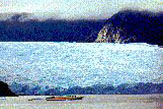 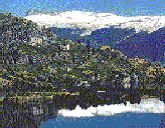 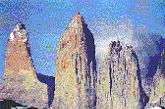 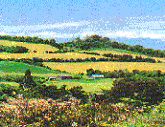 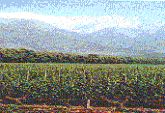 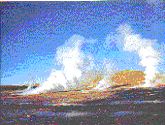  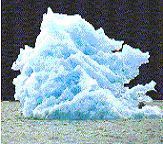  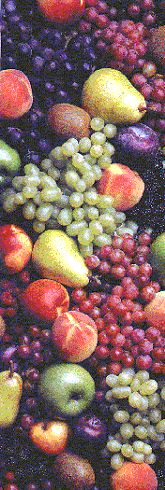 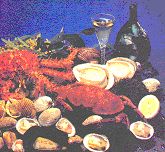 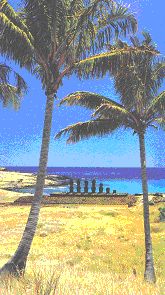 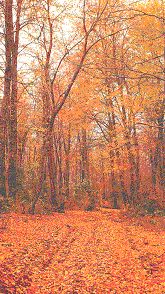 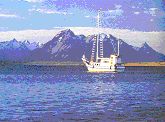 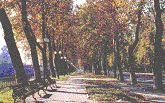  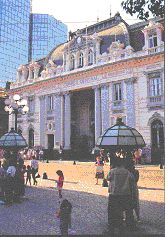  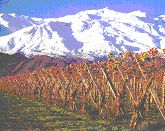 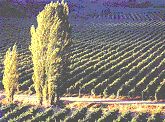  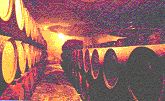 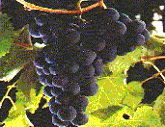  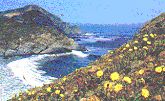 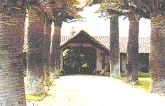 |
By opening a book of geography, an European often finds South America on the left page and Africa on the right one. Then, our reader thinks that these two continents end at the 33rd parallel.
Nevertheless, he is wrong: indeed, Chile lies 3000 kilometres more
south than Africa. In fact, the African continent ends at Cape Town
at the 33rd parallel in the southern hemisphere, but Chile ends
at the 57th parallel in the southern hemisphere (without taking
the Chilean territory of Antarctica into account), at the level
of the Diego Ramirez Islands. (These islands are even more south
than Cape Horn, which belongs to Chile). Chile makes part of three continents. Indeed, not only does the Chilean territory extends down South America, but also in Oceania (Easter Island and Salas and Gomez Islands), and Antarctica. And, finally, Chile is a country lying in the southern hemisphere between the 17th and the 57th parallels, and a country where we can find as many different climates and landscapes as those characterising the northern hemisphere between the 17th and the 57th parallels. We, Europeans, when we think about the south, our minds are really often crossed by the tropical heat, and, being the remotest country in the southern part of the world, some might think that, accordingly, Chile is a country with tropical heat, climates and landscapes. Nevertheless, from the equator, as we know, the more you go down south, the more the climate is cold. Consequently, the two thirds of the country lying in a region where the climates and landscapes are the same as those in the North of Western Europe, Chile has a climate between temperate and cold. To get an approximate idea of Chile's dimensions and of its climates and landscapes variety, we must imagine a country as wide as Belgium which continues, on the one hand, north until Norway's fjords and glaciers, and on the other hand, south until the Chad desert. Santiago of Chile, its capital, would be the equivalent of the city of Grenoble. Besides, as well as Canada, the USA, Mexico and Colombia, Chile has access to both Pacific and Atlantic Oceans. Indeed, Chile can reach the Atlantic Ocean thanks to the Strait of Magellan, which fully belongs to Chile, through the Beagle Canal and Cape Horn. It is not easy to imagine a country with such dimensions: 4.300 kilometres long as the crow flies, 225 kilometres wide, 43.000 kilometres of coasts, a surface area of 756.626 km ² (without taking the Chilean Antarctic territory into account), i.e. one and a half time the surface area of France, a plurality of climates and landscapes, and, consequently, of huge wealth. For example, Chile is currently the first world exporter of copper, fish flour, saltpetre, lithium and of lapis-lazuli; the first fruit and vegetables exporter in the southern hemisphere; the second salmon world exporter after Norway; the second world exporter of sea products after Canada; the third world exporter of wood and its derivatives after the USA and Canada; the fourth gold exporter, and shortly it will also export caviar. To get an idea of the forest abundance of Chile, we have to know that, on the one hand, the forest area of Belgium, including the Ardennes, amounts to 500.000 hectares, of France to 16 million hectares, and, on the other hand, to 36 million hectares in Chile. Accordingly,
Chile is a country that can be divided into four climatic regions:
the first one, which is desert, reminds us the Sahara; the second
one reminds us, with its vineyards, its Mediterranean beaches, but
also with its ski resorts in the winter, Spain and the South of
France; the third one makes us think of Switzerland with its lakes
and its woods; and the last one looks like Scandinavia with its
islands, fjords, glaciers and its archipelagos. The first Spanish settlers, as well as the important Basque colony that followed (and gave the inhabitants of the country a certain mentality), settled down in the rich and fertile valley of Santiago which mountains remind us the city of Grenoble. However, as for the German and Swiss settlers who, since 1850, have arrived in Chile all together, they chose to settle down in the region of the lakes, large rivers and huge forests, 800 kilometres south of Santiago. Currently, among the some 14 million inhabitants of Chile, the number of German and Swiss-German, whose second language is German, is estimated at 1 million. There were
also a lot of Irish (the Father of the Nation, who freed the country,
Bernardo O'Higgins, himself was of Irish origin), Croatian, French,
British, Italian, Scandinavian, Greek, Armenian, Pole, Portuguese,
Lebanese, Jewish, Palestinian, Hungarian, Dutch and Belgian migrations.
In the last century, Chile was, all over the world, known as one of the most prosperous countries on earth thanks to its natural resources such as saltpetre and guano, making of Chile the only producer and exporter of these products. In the XIX century, nitrate meant for Chile the same as oil for Brunei currently. Let's imagine that, today, there was only one oil producer and exporter throughout the world: it would, undoubtedly, be the richest country on earth. This was exactly the case of Chile during the XIX century: in fact, it was the nitrate producer and exporter assuring its monopoly in the modern agricultural field. Nowadays, the development, at a world level, of transport and communication means has been, moreover, transforming the large Chilean coast, on the Pacific Ocean fringe, into a compulsory place of passage for the exports and imports of countries such as Argentina, Brazil, Paraguay, Uruguay and Bolivia, whether till or from Oceania, Asia and America. Therefore, the favoured location of Chile represents a strategic interest for Europeans. On the one hand, a good that can be found in La Rioja in Argentina, for example, order to reach Asia or California, needs first to travel 1.500 kilometres until the port of Buenos Aires. Then, it needs to cross the Atlantic Ocean until the Panama Canal in order, afterwards, to go to California or Asia. On the other hand, if this good is carried by truck through Chile, it will only take some 150-250 kilometres before reaching a Chilean port of the Pacific coast (everything depends on which port you need to go to), avoiding doing useless thousands kilometres by land or by sea. When you fly to Chile, you will need to dedicate 15 days to your tourist visit, and preferably between September and March in order to take advantage of the sunny days on the following sites: - Desert Region: the Chungara Lake, Chuquicamata (the largest copper mine in the world), Del Tatio Geyser, San Pedro de Atacama, the Moon Valley and the Elqui Valley (where pisco is made); - "Mediterranean" Region: Santiago of Chile, Portillo (ski resort), Nevado Valley (ski), Viña del Mar, Valparaiso, Zapallar, Easter Island, Robinson Crusoe Island (Juan Fernandez) and many vineyards; - Lake Region: Pucon (Villarica Lake), Huife Thermal Baths, Palguin Thermal Baths, Villarica Volcano, Llifen (Ranco Lake), Puyehue Thermal Baths (Puyehue Lake), Antillanca (ski resort), Centinela (Llanquihue Lake), Frutillar (Llanquihue Lake), Puerto Varas (Llanquihue Lake), Petrohue (Todos los Santos Lake), Peulla (Todos los Santos Lake), Ralun (fjord), Achao (Quinchao Island in the Chiloe archipelago); - Glaciers Region: Southern Route (Carretera Austral), Puyuhuapi Thermal Baths, San Rafael Laguna, Torres del Paine National Park, Punta Arenas, Puerto Williams and Cape Horn. - Chilean Antarctica .
For the European travellers, Santiago, by its mild climate and its landscapes, reminds us the Mediterranean, but the Mediterranean countries are not as diversified: a varied coastline, an idyllic country, an effervescent capital, and the much fertile central valley crossed by large rivers which is both the orchard and the breadbasket of the country. Santiago is the economic and political centre of the country and includes some 6 million inhabitants (almost the half of the global Chilean population). The city offers a picture wherein European elegance and avant-garde architecture mingle. It lies only at two hours at the very most from the coast, and at half an hour from the internationally renowned ski resorts. In the winter, you can already reach a ski resort after a 45-minute drive and those ski runs have no reason to envy those in Avoriaz, Val d'Isère and the Alps as a whole. In the summer, after driving one hour from Santiago, you reach many seaside resorts such as Zapallar, Cachagua, Viña del Mar, Rocas de Santo Domingo, Algarrobo, Cartagena, and the everlasting Valparaiso.
The public will never be able to understand the quality of the Chilean wines unless they realise that Chile is, geographically speaking, a favoured and unique location for the wine-growing production. In fact, in Chile, there are at least 100.000 square kilometres of land where the climate, the soil quality, the rains system, the sea proximity, the balancing cold from the mountains and a good sun make this country a wine-growing paradise. In the wine-growing regions of Chile, you can find a splendid combination of high altitudes (7.000 metres high), the breathless proximity of the sea, the geographic latitude (the Chilean wine-growing region can be found between the 30th and the 38th parallels in the southern hemisphere), the land and water quality, and the natural barriers of the desert North and the icy south, which assure, on the one hand, the radiance of a good sun, and on the other hand, cool nights working like a real "natural air conditioning" for the vineyard (in the summer, for example, the temperature can reach some 30 degrees at noon, and fall to some 16 degrees at night). Chile is the only country in the world where there is neither phylloxera nor mildew (two parasite diseases existing in the rest of the world, and forcing the other wine producers to use the graft). The soils are diversely made up of conglomerates, deposits, sand, alluvial and volcanic ashes derivatives, which makes Chile a crumbly, rich but light soil in which aphids can't move. The underground is made up of water rocks and gravel. There are two
major wine routes: -Colchaqua Valley (roughly 180 kilometres from Santiago): visit of the little town, Santa Cruz, lying in the heart of 10 major vineyards; visit of the El Huilque Hacienda (17th century) which reminds us the summer residences of the Chilean aristocratic families. Visit of the Bisquertt vineyard and its colonial residence, its 600 hectares of vineyards. Visit of the Viu Manent vineyard founded in the mid-19th century. VIÑA DEL MAR Valparaiso and Viña del Mar, two neighbouring towns that, being both erected on innumerable hills, overhang the Pacific Ocean, fight, with different styles, for the favour of the tourists: one seduces you at the bend of its twisting alleys with the anarchic and multicoloured tangle-up of its houses and by its port activity, the other charms you with its society hotels, its intense night life and its beaches where you go to see and to be seen. Many seaside resorts, among which Zapallar (the Chilean Saint Tropez), are attractive centres as well for sun lovers, surfers and golf and horse-riding fanatics.
The colourful city of Puerto Montt is only a necessary springboard before visiting the magnificent Chilean Lakes Region that had been colonised by Germans since 1850. As soon as you arrived in Puerto Montt, it is essential to visit Puerto Varas, the neighbouring town, which enjoys an unimpeded view over the sparkling mirror of the Llanquihue Lake or over the snow-covered rounded peak of the Osorno volcano. Starting from Puerto Varas, during the day, you can visit the most beautiful lake on earth, the Todos los Santos Lake, better known as the Emerald Lake because of its green-coloured waters.
Going south from Puerto Montt, another Chilean country, full of islands, fjords and glaciers, begins. Chiloé is believed to be the Chilean Brittany with its abundant-in-water green hills that also make us think of Ireland. The large Chiloé island, whose capital is Castro, leaves its mark with contrast between the simple lifestyle of its inhabitants, the Chilotes, and the richness of their culture: mythology abundant in mysterious legends, influent music rhythms, typical architecture of the tile-covered churches, copious culinary specialities of the seafood restaurants. It is unavoidable to eat the curanto and the milcao.
Glaciers flowing into the sea cross one third of Chile (i.e. some 200.000 square kilometres). There are so many glaciers in Chile that the United Nations estimate that Chile is the third world exporter of drinking water after Greenland and Canada. There are different kinds of glaciers. The field of the Patagonia ice floes, for example, which area includes more or less 18.000 square kilometres (i.e. more than the half of Belgium), represents the most important glacial mass in the world after that of Antarctica. Glaciers arise as rivers flowing into lakes or seas. The Glacier of the San Rafael's Laguna represents an insurmountable continental glacier which span moves the 400 kilometres locking in this region of Chile.
The mixing of interbreeding immigrants from Croatia, England, Germany, France and Spain has marked, with its particular stamp, Punta Arenas, the town lying on the bank of the Strait of Magellan. The ovine breeding barons, the owners of huge estates stretching until the Atlantic fringe, made their sumptuous villas built round the place. On the coloured roofs of the town, we can reach the Tierra del Fuego with the eye, on the other bank of the strait. In the surroundings of Punta Arenas, we can also find thousands of penguins.
The large Tierra del Fuego, called after the fires of the aborigines that could be seen from the coast, belongs to Chile and Argentina. The Northeast part belongs to Argentina while the Southern and the Northwest ones belong to Chile, making it the most austral country in the world. Accordingly, the two most austral towns in the world are in Chile, namely Puerto Williams and Puerto Navarino. These two towns are located even more south than the most known Argentine town of Ushuaia. NORTHERN CHILE The North of Chile bewitches you with its variety of desert landscapes, with the Andes Mountain Ranges which goes alongside the desert, with its volcanoes, its geysers, its mining villages that have known the rich times of the saltpetre. Being in the Atacama Desert, it's like knowing the arid Moon Valley, admiring the takeoff of pink flamingos above the Tatio's geysers and the salted lakes, climbing until the Chungara Lake (at 4570 metres high). You can also visit the village of San Pedro of Atacama, a stage where you can get familiarised with the Indian culture.
3800 kilometres away from the continent, in a subtropical climate, the visitor discovers the giant statues alignments (moaïs), the volcanic rocks engraved with mysterious Rapa Nui writings. After an excursion to the craters of the volcanoes, you need to make a detour through the Polynesian beaches.
Fernando Morales
Barría |
